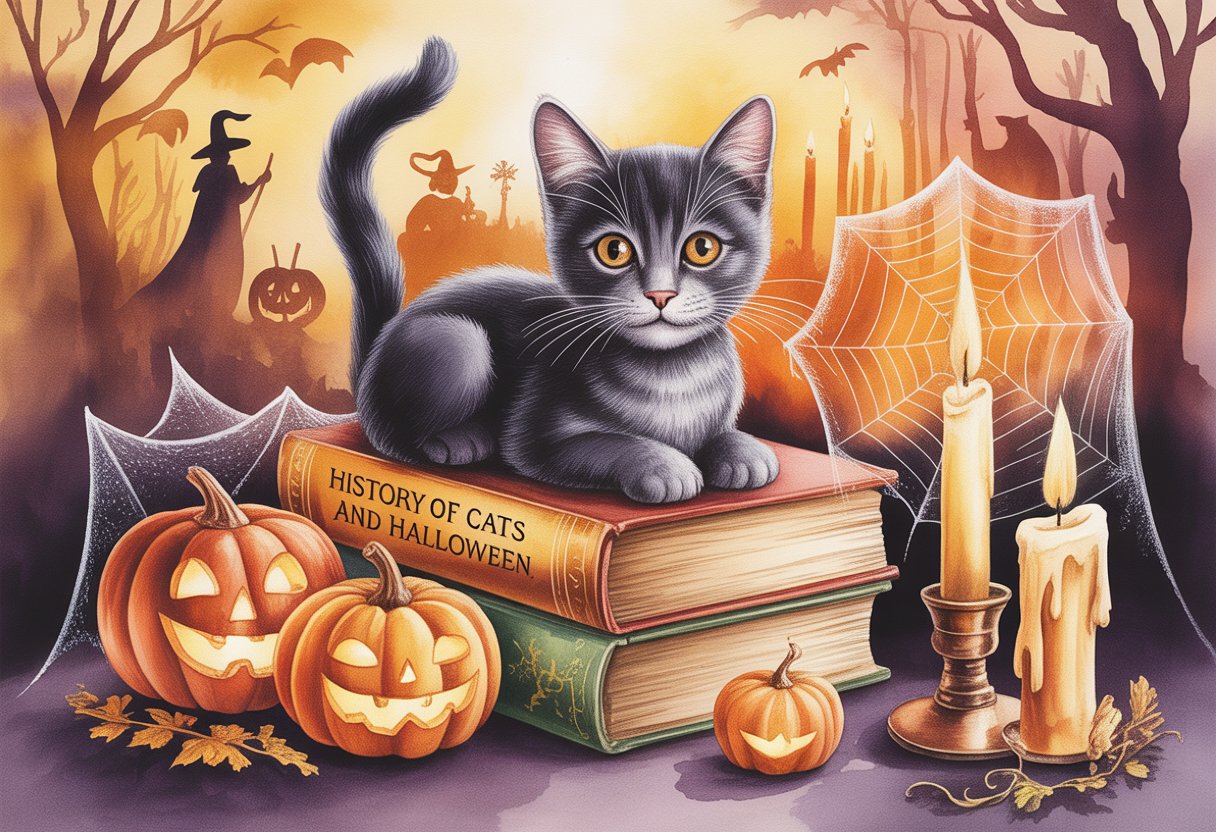
Cats and Halloween go way back—centuries, actually—blending history, folklore, and superstition into a tradition that still shapes the holiday. From ancient rituals to medieval fears, these mysterious animals picked up powerful meanings that now pop up in decorations, costumes, and stories every October.
You discover how myths and legends turned cats into one of Halloween’s most lasting symbols.
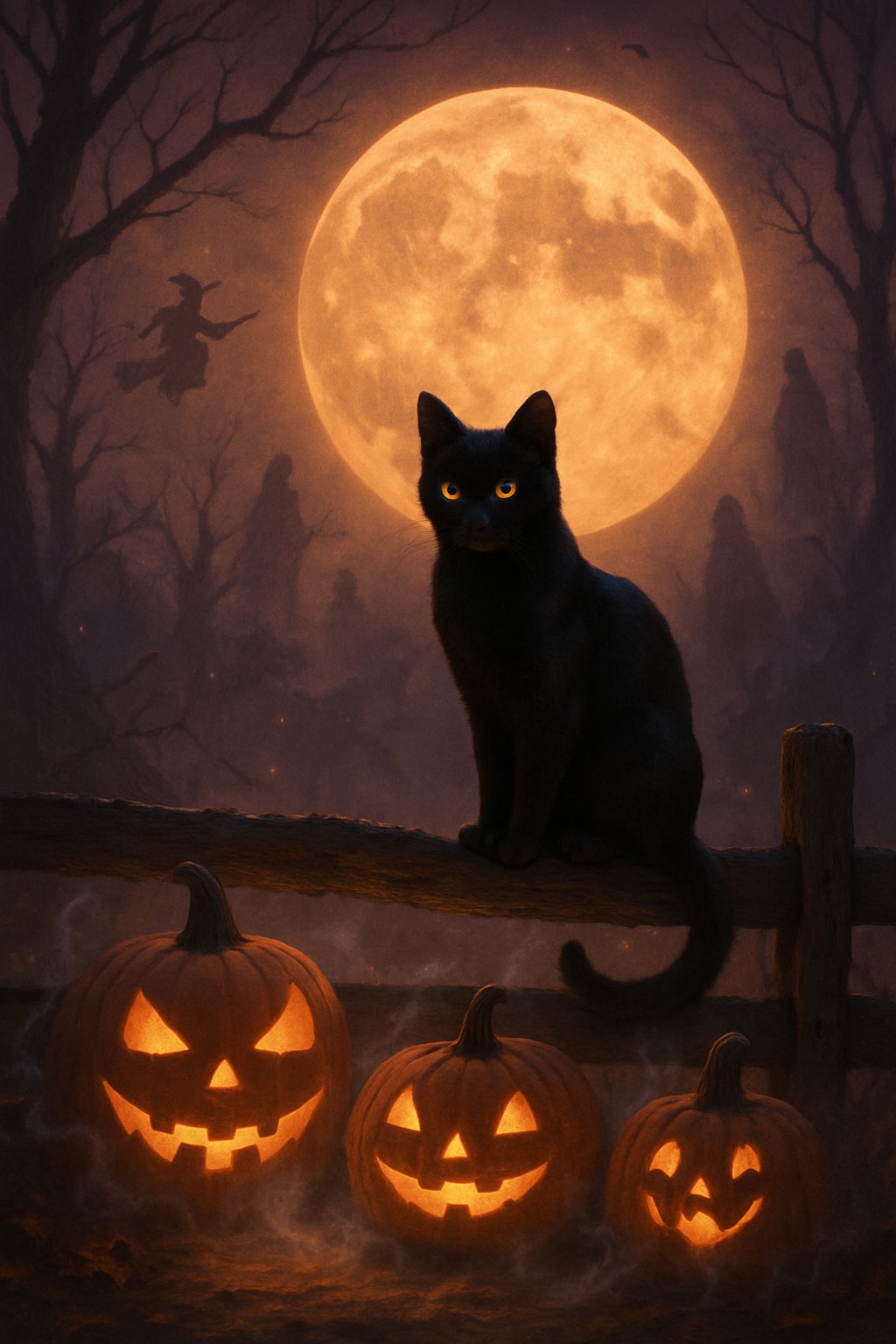
As you dig into the past, you’ll see how different cultures saw cats as sacred, magical, or even dangerous. Every belief added another layer to their supernatural connection, creating that mix of mystery and wonder we still feel.
This history gives Halloween more depth than you might expect. Myth and tradition shape so much of what we see today.
Ancient Egyptians revered cats as sacred, linking them to the goddess Bastet!
It might surprise you, but in ancient Egypt, people didn’t just keep cats as pets—they honored them as sacred animals. Folks believed cats carried protective powers that kept families safe.
Bastet, the goddess of home and fertility, often appeared as a woman with a cat’s head. She symbolized gentle care and fierce defense at the same time.
Imagine how powerful it felt to have a cat around the house. Cats not only protected grain from mice and snakes, but they also connected you to divine favor.
If your cat died, you didn’t just shrug it off—you might take part in special burial rituals. Some families even left cat-shaped offerings in temples for Bastet.
Laws made harming a cat a serious crime, and not even the pharaoh could pardon someone who broke those rules. That says a lot about how deeply Egyptians respected them.
By caring for cats, people believed they were inviting protection, prosperity, and Bastet’s blessing into their lives.
Black cats were believed to be witches’ familiars in medieval Europe!
When you picture Halloween, it’s almost impossible not to think of a black cat with glowing eyes. In medieval Europe, people thought those cats weren’t just pets.
They believed black cats served as helpers—“familiars”—for witches. Stories claimed witches could change into black cats at night.
That idea made people fear them, seeing them as signs of magic or danger. During witch hunts, black cats often got caught up in the chaos.
If you owned one, others might suspect you of witchcraft. Some even thought the devil gave witches black cats to help with spells.
That belief traveled across Europe and into the Americas during witch trials. So, a simple animal ended up with a pretty wild reputation.
Black cats became symbols of mystery.
Celtic legends saw cats as mystical creatures connected to the Otherworld!
In Celtic stories, cats played powerful roles as magical beings. They weren’t just animals—they were tied to mystery, fear, and respect.
You’ll find them linked to the Otherworld, a place of spirits, gods, and the dead. The Cat-Sìth, for example, was a fairy cat described as large and often black with a white spot.
People believed it could steal souls or guard the path between life and death. That made folks treat these cats with caution and awe.
In Irish and Scottish tales, cats guarded portals to the Otherworld. You might picture them slipping between realms, carrying secrets humans couldn’t quite grasp.
Their night vision and silent steps only fueled the legends. When you imagine Celts watching wild cats roam, it’s no wonder they saw them as magical.
To the Celts, your cat wasn’t just a pet—it might’ve been a messenger from another world.
In folklore, black cats symbolized both good and bad luck, adding to Halloween’s mystery!
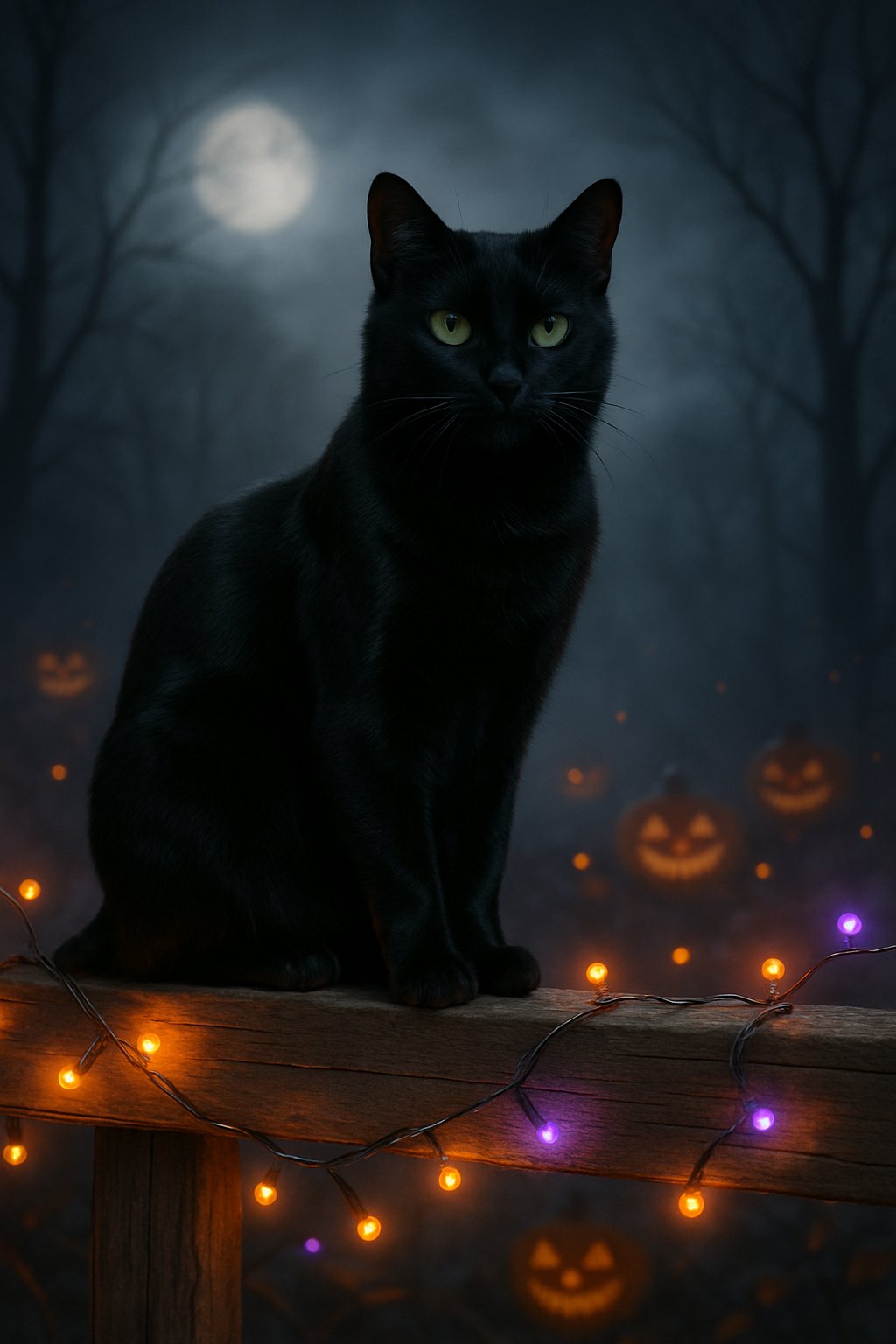
Spot a black cat on Halloween night, and you might think, “Uh-oh, bad luck!” That idea comes from old European beliefs linking black cats to witches and dark magic.
Their shadowy fur made them seem mysterious—especially by moonlight. But not everyone saw black cats as unlucky.
In ancient Egypt, cats were sacred, and black cats acted as protectors. In Japan and parts of the UK, people believed a black cat could actually bring good luck into your home.
You can see how these mixed views shaped Halloween traditions. Some stories warned you to avoid crossing paths with a black cat, while others said you should welcome one for luck.
That contrast makes black cats feel even more magical around Halloween. They became symbols of both fear and hope.
Their role in folklore gave Halloween an extra layer of mystery. You never really know if the cat you spot means mischief or a blessing—and that’s part of the fun.
Cats were thought to be fairies in disguise, blending magic and myth!
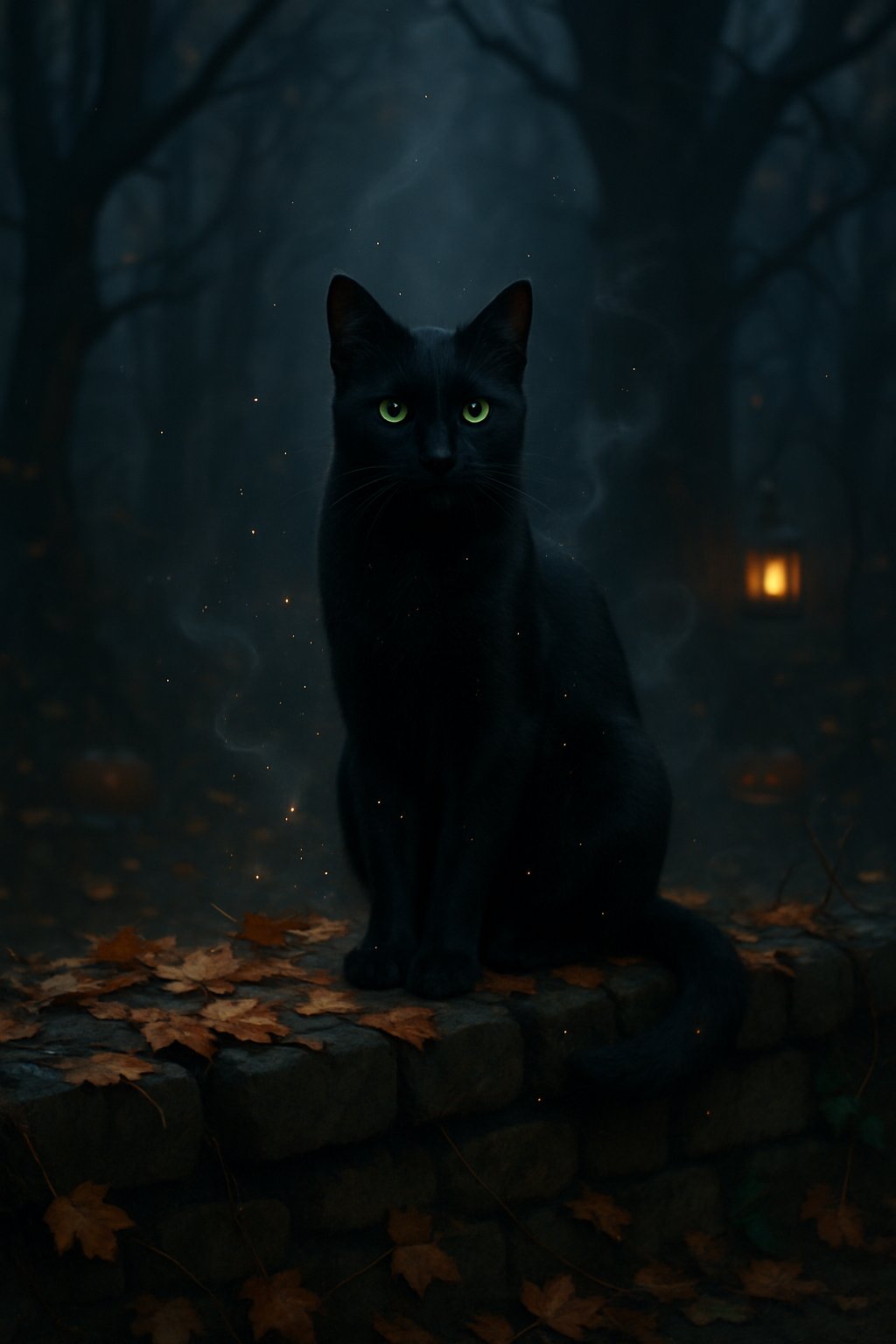
In old folklore, some folks said cats weren’t just animals—they were fairies hiding in plain sight. Their glowing eyes and silent steps made them perfect vessels for magical beings.
You can just picture how this idea grew at night, when cats moved like shadows through the dark. Their sudden appearances and vanishing acts felt almost supernatural.
Celtic traditions claimed fairies could shift shape to walk among humans. A sleek black cat might’ve been a fairy out exploring your world.
This belief tied cats to mystery and enchantment during festivals like Samhain—an influence that stuck around for Halloween. The thought of a fairy-cat near your door added both wonder and a little caution to the night.
Even now, when you catch a cat staring like it knows something you don’t, it’s easy to feel a trace of that old belief. Maybe they really do carry a bit of hidden magic.
During the Middle Ages, cats were often associated with witchcraft and dark magic!
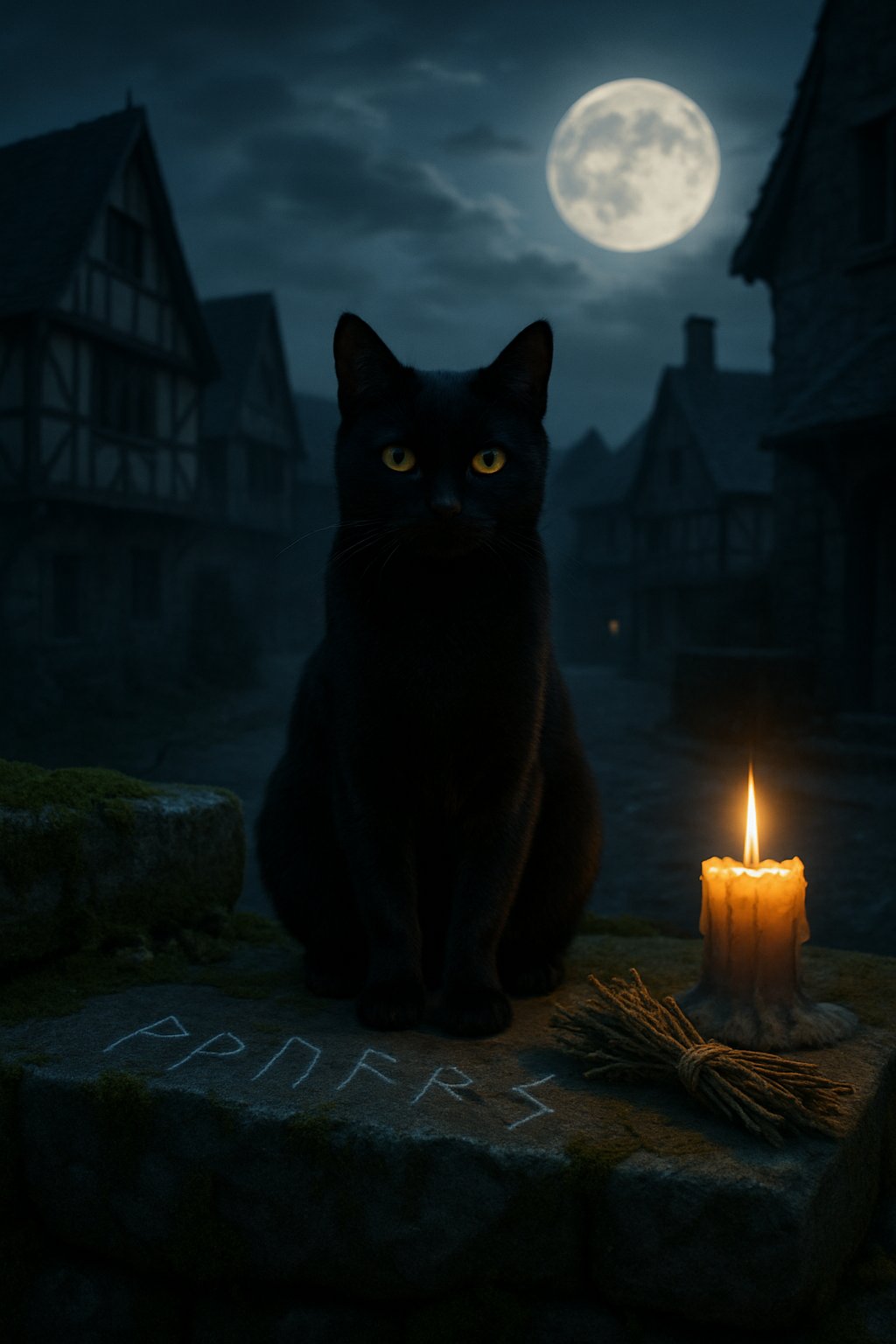
Picture the Middle Ages: castles, knights, superstition everywhere. Cats—especially black ones—got tangled up in fears of witchcraft during this era.
People believed cats carried mysterious powers that connected them to witches and the devil. Townsfolk treated cats with suspicion.
Some thought witches could turn into cats to sneak around at night. Others saw cats as magical helpers, or “familiars,” giving witches their strength.
Neighbors sometimes avoided cats, fearing bad luck if one crossed their path. This fear ramped up during church-led campaigns against heresy, where cats were often linked to “dark” practices.
Yet, people still kept cats around homes and farms. They needed them to hunt mice and rats—even if they whispered about their “otherworldly” side.
This mix of fear and practicality made cats both useful and a little bit feared.
Halloween decorations featuring cats echo centuries of superstition and magical lore!

When you spot a black cat on a Halloween decoration, you’re seeing more than just a spooky design. Those images come straight from centuries of myths that tied cats to mystery and magic.
You’ll notice cats with arched backs, glowing eyes, or sitting next to witches. These designs reflect old beliefs that cats—especially black ones—were linked to witchcraft and the supernatural.
Your Halloween décor often borrows from Celtic traditions, too. In some legends, black cats were spirits or even fairies in disguise.
That history still shapes how we see cats in seasonal imagery today. When you put a cat figurine on your porch or carve one into a pumpkin, you’re carrying on a long tradition.
People once believed cats could bring luck, warn of danger, or even guard against evil.
Even now, our decorations capture that mix of superstition and wonder. The black cat still stands out as one of Halloween’s most recognizable symbols, thanks to its deep roots in folklore and magical lore.
Origins of the Cat-Halloween Connection
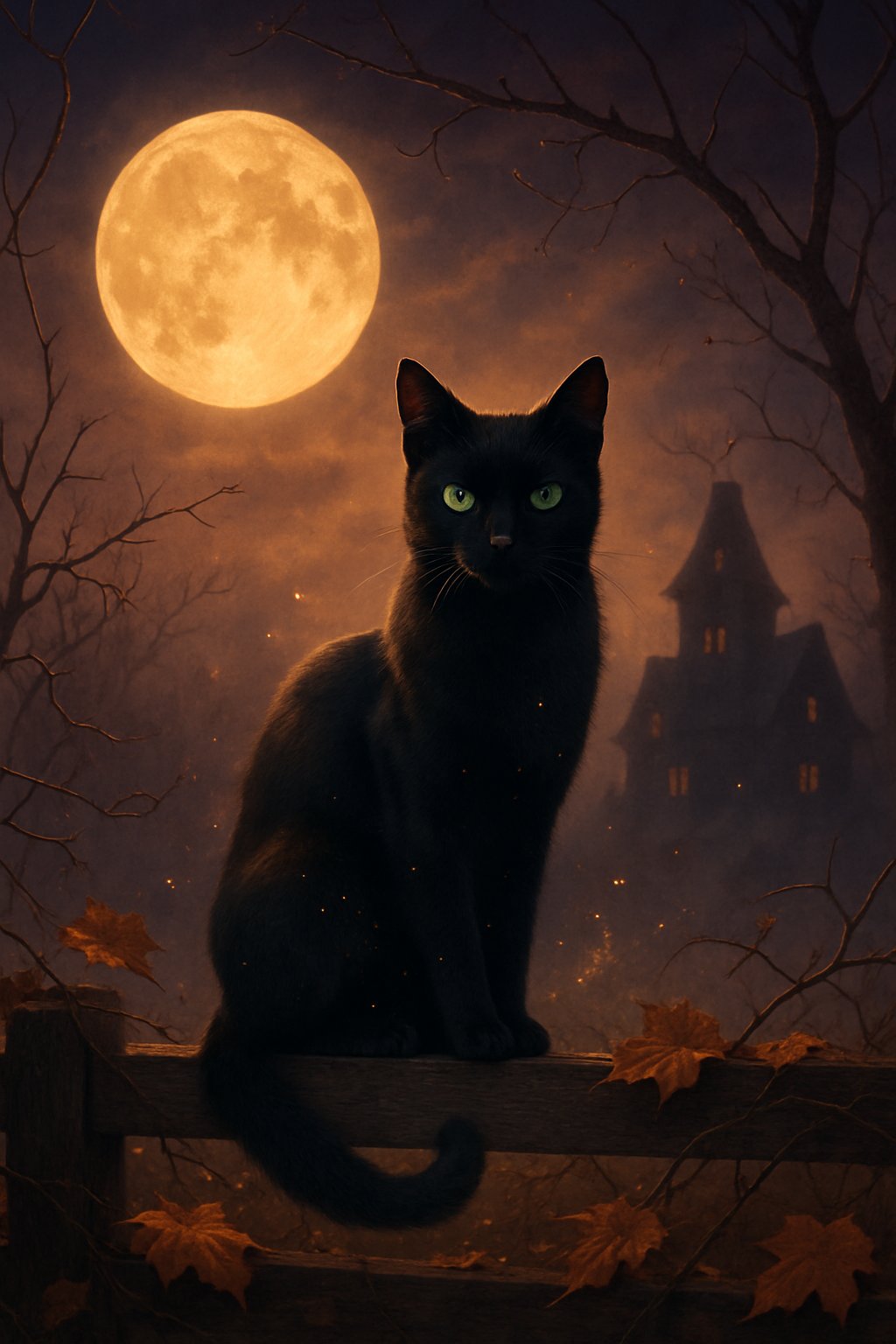
You see cats tied to Halloween because their roots in myth, religion, and folklore run deep. From sacred roles in ancient cultures to dark superstitions in Europe, cats picked up powerful symbolism that still shapes how we see them.
Ancient Egypt and Sacred Felines
In Ancient Egypt, cats held a place of honor. People linked them to protection, fertility, and family life.
The goddess Bastet, often shown with a cat’s head, symbolized safety and home. Egyptians even mummified cats—pretty wild, right?—which shows how much they valued these animals.
Cats also played a practical role by hunting mice and snakes, protecting food stores. That made them vital for survival, not just for spiritual reasons.
When you look at Halloween’s symbols, the Egyptian connection matters. It shows the earliest cultural respect for cats and helps explain why we see them as creatures with a deeper, almost magical purpose.
Medieval Europe’s Superstitions
Centuries later in Europe, people saw cats in a very different light. Rumors swirled that cats, especially black ones, had ties to witches.
Many folks believed witches kept cats as companions, or even transformed into them. That fear really took off during the Middle Ages.
The Church started viewing cats as symbols of the devil. In some places, people went so far as to destroy cats during festivals, hoping to keep evil away.
The superstition stuck partly because cats are nocturnal. Their glowing eyes and sneaky, silent moves just seemed off to people back then.
Maybe that’s why black cats got tangled up with ideas of danger and bad luck.
Transition to Modern Halloween
As Halloween grew out of the Celtic festival of Samhain, cats slipped into the holiday’s imagery. Celts thought spirits crossed over during Samhain, and cats supposedly guarded that thin line between worlds.
When Halloween made its way to America, old European fears about witches and black cats mixed with these Celtic traditions. Over time, cats just became a Halloween staple.
Now you spot them everywhere—decorations, costumes, stories. Instead of fear, they bring a little mystery and a lot of charm to the holiday.
They’re a reminder of Halloween’s weird mashup of history, superstition, and fun.
Symbolism and Cultural Impact
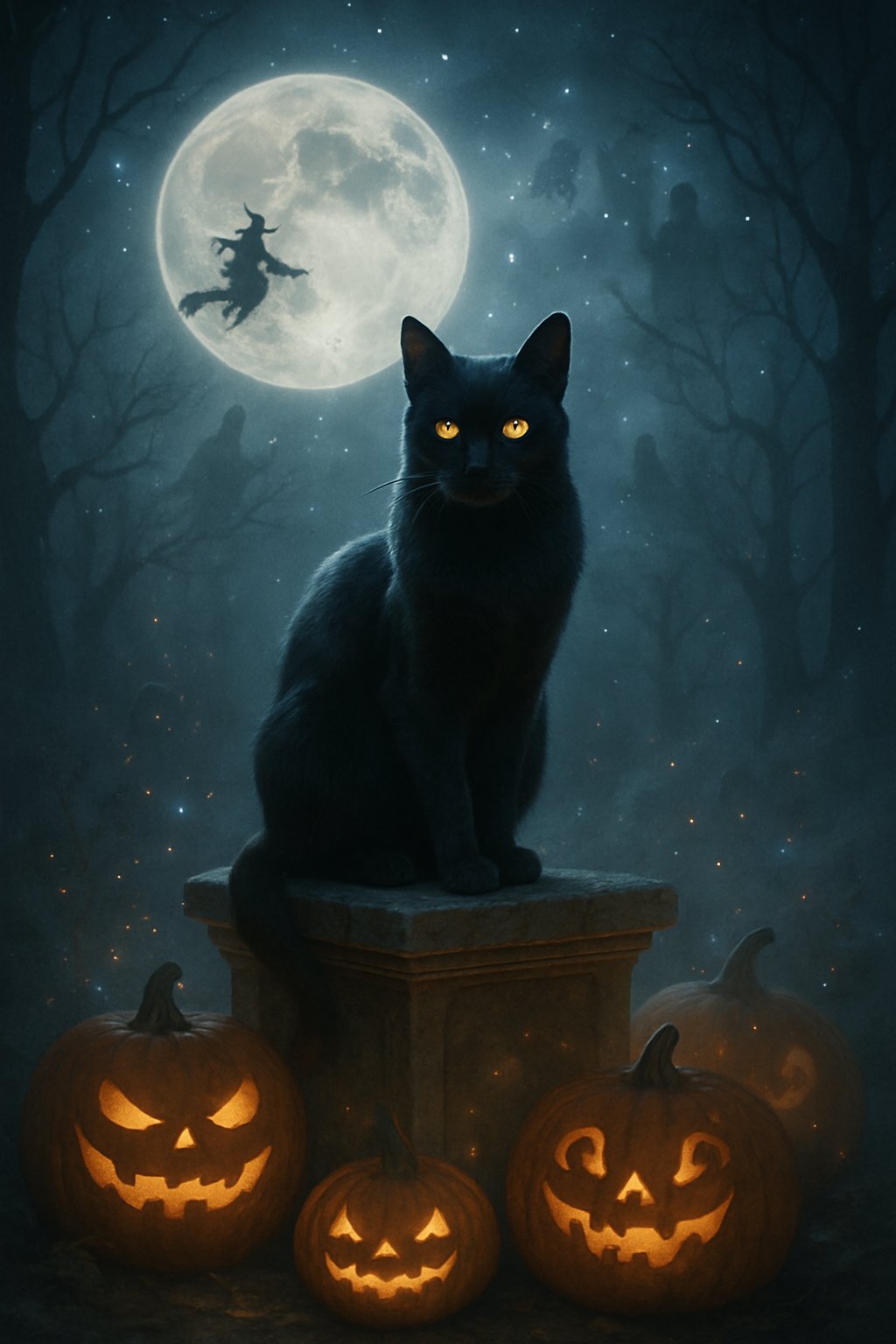
You’ll spot cats in myths as both protectors and warnings. Depending on the culture, their role shifts, but they almost always carry some heavy symbolic meaning—fate, luck, the unknown.
Cats as Omens and Protectors
In a lot of places, people saw cats as guardians. Ancient Egyptians honored them as sacred, connecting them to Bastet, the goddess of home and protection.
You’d find cats painted on walls, carved into amulets, even mummified to help guide spirits.
Sailors loved having cats on ships, believing they brought luck and safe travels. Their hunting skills protected food, but folks also thought cats could keep storms and evil spirits away.
In Japan, the Maneki-neko or “beckoning cat” stands for good fortune. You’ve probably seen those little statues in shops, one paw raised, as if waving in prosperity.
That image comes from old beliefs that cats could attract wealth and keep bad vibes out.
Across Europe, cats got mixed reviews. Some believed a black cat crossing your path spelled bad luck, while others thought it brought the opposite—good fortune and safety.
All this shows how cats have always sat right at the center of our hopes, fears, and maybe a little superstition too.
Magic, Witchcraft, and Black Cats in Folklore
Back in the Middle Ages, folks started linking cats—especially the black ones—to witchcraft. People whispered stories about witches keeping cats as familiars, little spiritual sidekicks that supposedly helped out with spells.
Some swore witches could actually turn into cats and sneak around at night without anyone noticing. That idea alone spread a lot of fear.
During witch trials, authorities would sometimes use cat ownership as “proof” of sorcery. Black cats really got the worst of it, often seen as dark omens or signs of evil magic.
Oddly enough, some places still thought black cats brought good luck. Beliefs weren’t exactly consistent from village to village.
Stories in folklore painted cats as creatures with a foot in the supernatural. Their sharp eyes, silent paws, and love of the night made them seem almost otherworldly.
Imagine living in a candlelit village, catching a glimpse of a cat slipping through the shadows. It must’ve felt both magical and a little unsettling.
Even now, black cats show up everywhere around Halloween. When you spot them in decorations, you’re really seeing the weight of centuries of old stories—reminders that people have always seen cats as more than just pets, but as symbols of magic and mystery.

